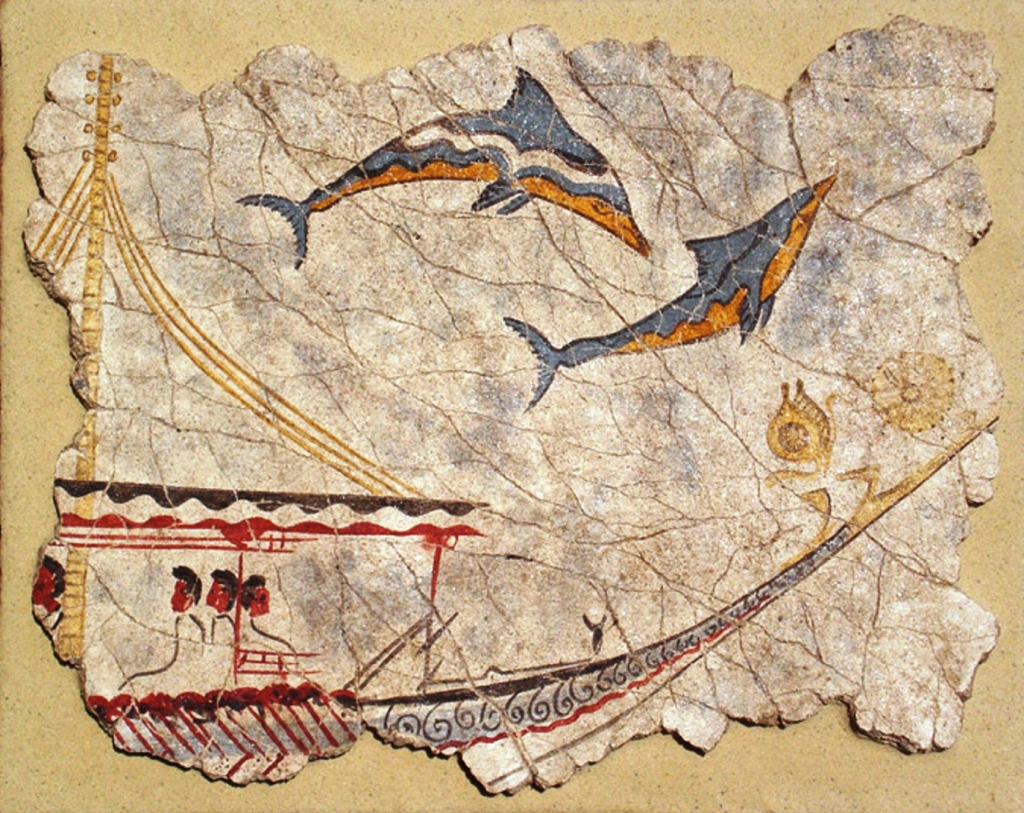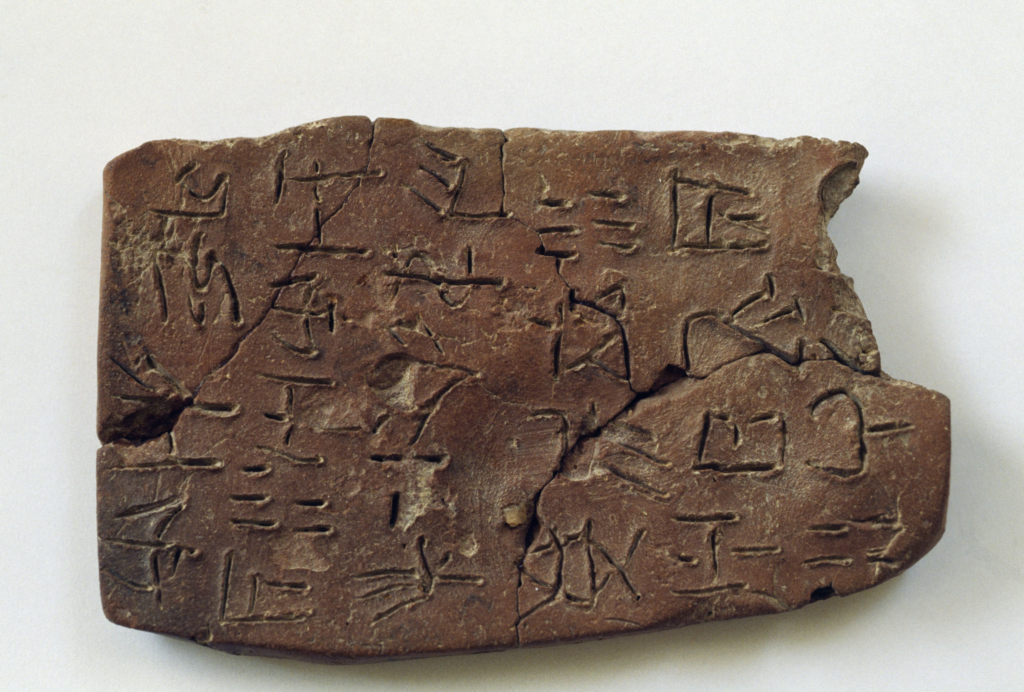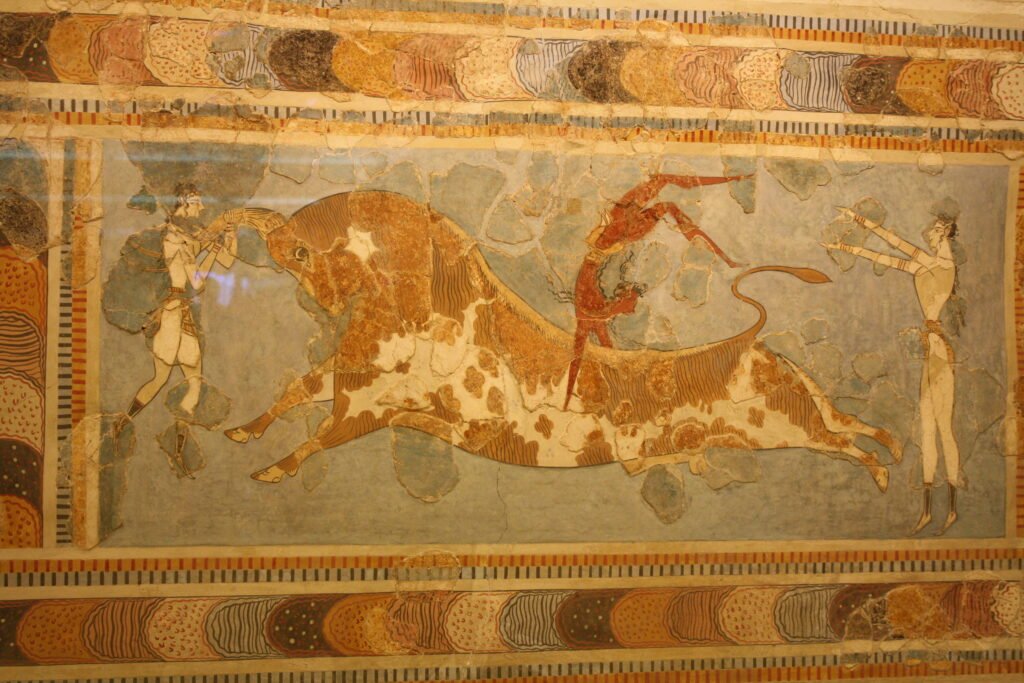Minoans
The Minoan civilization flourished on the Greek island of Crete and other nearby islands from about 3100 to 1100 BC. They were among the first advanced civilizations in Europe, famous for their incredible palaces, vibrant art, and impressive trade networks.
Key Points
Palaces: The Minoans built grand palaces, the most famous being the Palace of Knossos. These palaces served as administrative, religious, and economic centers.

Art: Minoan art is lively and colorful. They created beautiful frescoes (wall paintings), pottery, and sculptures. Common themes included nature, such as dolphins and flowers, and scenes of daily life.

Writing: The Minoans developed two types of writing: Cretan hieroglyphs and Linear A. Unfortunately, we haven’t fully deciphered these scripts, so there’s still some mystery about their language.

Trade: They were skilled traders, exchanging goods like pottery and olive oil for metals and other materials with neighboring regions. This made them quite wealthy and influential.
Religion: Minoan religious practices included worshipping goddesses, nature deities, and sacred animals. They held ceremonies in palaces, sanctuaries, and caves.

Economy and Trade
The Minoans were remarkable traders. They established extensive trade networks that reached as far as Egypt, the Near East, and the Aegean islands. These trade networks allowed them to acquire essential goods, such as metals, which were not naturally abundant on Crete. In exchange, they exported high-quality crafts, pottery, and agricultural products like olive oil and wine.
Society and Government
The structure of Minoan society is still somewhat enigmatic. However, it appears that their society was organized around the palaces, which served as administrative and economic hubs. There is no clear evidence of a centralized monarchy, leading some scholars to believe that the Minoan civilization was made up of autonomous city-states governed by local elites. Women seem to have held prominent roles in society, as depicted in various artworks and religious practices.
Art and Architecture
Minoan art is known for its naturalistic and dynamic style. Frescoes were used to decorate the walls of palaces, depicting scenes of nature, religious rituals, and sports such as bull-leaping. Pottery was another important art form, ranging from simple everyday ware to finely decorated ceremonial pieces.
Minoan architecture is characterized by its complexity and sophistication. The palaces, particularly Knossos, featured multiple stories, intricate layouts, and advanced engineering techniques such as water management systems and drainage.
Religion and Rituals
The Minoans practiced a polytheistic religion, worshipping various deities, many of whom were female. The Snake Goddess is one of the most iconic Minoan deities, often depicted holding snakes in both hands. Religious ceremonies were held in palaces, peak sanctuaries on mountains, and sacred caves. These ceremonies included offerings, processions, and possibly even ritual dancing.
Downfall and Legacy
The decline of the Minoan civilization is believed to have been caused by a combination of natural disasters and external invasions. Around 1450 BC, many Minoan sites were destroyed, possibly due to earthquakes and volcanic eruptions, like the eruption of Thera (modern-day Santorini). Subsequently, the Mycenaeans from mainland Greece took over Crete, leading to the integration of Minoan and Mycenaean cultures.
Despite their eventual decline, the Minoans left a lasting legacy. Their art, architecture, and trade networks influenced later Greek civilizations and contributed to the cultural foundation of the classical world.


I’m extremely inspired together with your writing abilities and also with the format in your blog.
Is that this a paid subject matter or did you customize it yourself?
Either way stay up the nice quality writing, it’s uncommon to see
a great blog like this one today. Madgicx!
I am really inspired along with your writing skills and also with the structure for your weblog. Is this a paid topic or did you customize it your self? Either way keep up the nice quality writing, it is rare to peer a nice blog like this one today!